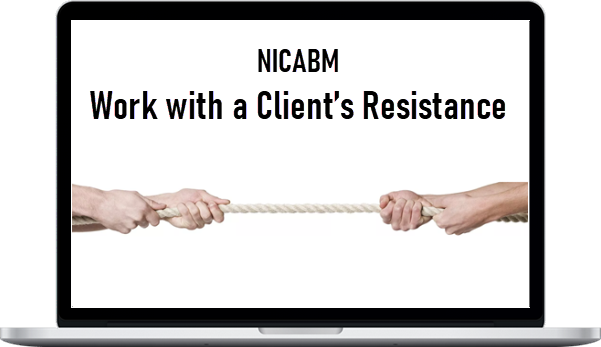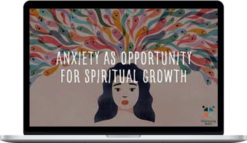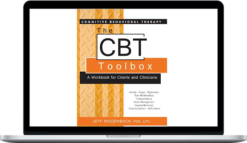NICABM – Work with a Client’s Resistance
$197.00 $19.00
»Within 24hs
Description
NICABM – Work with a Client’s Resistance
Description Of Work with a Client’s Resistance
Expert Strategies for Dissolving Your Client’s Resistance
When our clients are distrustful or skeptical of our work, it can create difficult barriers to healing.
To us, this can sometimes feel like resistance.
But is resistance even a valid notion?
What may at first seem like opposition, can often signal our client’s deepest struggles.
The difficult part is seeing beyond the “push back” to take in the important message our client is telling us, so we can work with instead of against their energy.
So we asked the top 20 experts in our field how they worked with their most challenging clients. We were surprised by the deep dive of their answers.
They gave us useful skills that can radically shift this kind of resistance and actually help reverse a client’s ambivalence to change.
That’s why we made. . .
What you’ll learn in Work with a Client’s Resistance
How to Work with a Client’s Resistance
How to Help Clients Shift Out of Avoidance so They Can Heal
Part 1: How to Work with Reluctance Linked to Attachment Issues
- Pat Ogden, PhD Kelly McGonigal, PhD
- How a client’s movement vocabulary can reveal an inner conflict
- One way to help clients reestablish a sense of identity in their body
- How to approach implicit memories that fuel a client’s avoidance
Part 2: How to Resolve the Core Threat That’s Fostering Your Client’s Opposition
- Sue Johnson, EdD Kelly McGonigal, PhD
- How to change a combative session into a collaborative one
- How to isolate the main threat that’s feeding a client’s rigidity
- The simple but powerful way validation impacts an avoidant mindset
One Hidden Fear That May Be Driving Your Client’s Reluctance
- Laurel Parnell, PhD Rick Hanson, PhD
- The counterintuitive reason your client may be avoiding change
- The unique way guilt affects a client’s feelings of unwillingness
How to Help Clients Move Out of a Defensive State
- Bessel van der Kolk, MD Stephen Porges, PhD Ron Siegel, PsyD
- The critical reason some clients fear calmness
- One physiological change that can alter how we interact with others
- The specific breathing pattern that can trap a client in a defensive state
3 Skills to Expand a Client’s Openness to Change
- Kelly McGonigal, PhD Bill O’Hanlon, LMFT Ron Siegel, PsyD
- One personality type that is most prone to challenging the therapy
- A 3-step action plan to foster change without triggering opposition
- How to promote a healthier mindset that resists barriers to growth
How to Work with the Deep Vulnerabilities That Keep a Client from Change
- Richard Schwartz, PhD Kelly McGonigal, PhD Bill O’Hanlon, LMFT
- Terry Real, MSW, LICSW Ron Siegel, PsyD
- The crucial message that can soften a client’s protective parts
- The specific way to introduce hope in the healing process (so it’s actually received)
- How to work with “rational deformity” to help clients build authentic connections
- The silent vulnerability that’s most often behind a client’s reluctance
How to Avoid Misdiagnosing Clients as Unmotivated
- Michael Yapko, PhD Bill O’Hanlon, LMFT Ron Siegel, PsyD
- The key factor that falsely presents as a lack of motivation
- The vital message your client is giving you when they don’t follow your advice
- The important difference between resistance and rigidity
- How a client’s specific cognitive style can keep them stuck in avoidance
How to Sell Behavior Change to Your Most Challenging Clients
- Marsha Linehan, PhD Peter Levine, PhD
- What can go wrong when you engage a client’s willfulness
- How to help clients be more open to your interventions
- What a client needs to get from you before they’ll agree to your ideas
How to Help Clients Shift from Reluctance to Openness
- Shelly Harrell, PhD Ron Siegel, PsyD Kelly McGonigal, PhD
- How to identify seeds of unwillingness inside the therapeutic alliance
- One change that can improve your outcome with clients who oppose all your ideas
- How to work with clients who struggle to disclose feelings
- 3 therapeutic messages to help clients reverse their reluctance
How the Practitioner May Be Perpetuating Opposition in Their Client
- Rick Hanson, PhD Bill O’Hanlon, LMFT Zindel Segal, PhD
- Ron Siegel, PsyD Kelly McGonigal, PhD Joan Borysenko, PhD
- What can go wrong when you resist a client’s resistance
- How to recognize the dangerous way a client’s willfulness may be affecting you
- How to foster a high level of support for clients who don’t do the work
About NICABM
We proudly provide continuing education for practitioners who are dedicated to being the best in their craft. Our goal is to develop programs that connect you with the top experts and the latest strategies in the field, to help you achieve better outcomes, more quickly with each of your clients.
About Course Director: Ruth Buczynski, PhD
Dr. Ruth Buczynski is a licensed psychologist and founder and president of The National Institute for the Clinical Application of Behavioral Medicine (NICABM). NICABM helps physicians, nurses, psychologists, social workers, and counselors – practitioners who have some of the most significant and life-changing missions on the planet – provide cutting-edge, research-based treatment strategies to their patients. For more than 25 years, NICABM has offered accredited training and professional development programs to thousands of practitioners worldwide.
More courses from the same author: NICABM
Delivery Policy
When will I receive my course?
You will receive a link to download your course immediately or within 1 to 21 days. It depends on the product you buy, so please read the short description of the product carefully before making a purchase.
How is my course delivered?
We share courses through Google Drive, so once your order is complete, you'll receive an invitation to view the course in your email.
To avoid any delay in delivery, please provide a Google mail and enter your email address correctly in the Checkout Page.
In case you submit a wrong email address, please contact us to resend the course to the correct email.
How do I check status of my order?
Please log in to HealingCourse account then go to Order Page. You will find all your orders includes number, date, status and total price.
If the status is Processing: Your course is being uploaded. Please be patient and wait for us to complete your order. If your order has multiple courses and one of them has not been updated with the download link, the status of the order is also Processing.
If the status is Completed: Your course is ready for immediate download. Click "VIEW" to view details and download the course.
Where can I find my course?
Once your order is complete, a link to download the course will automatically be sent to your email.
You can also get the download link by logging into your HealingCourse account then going to Downloads Page.
Related products
Total sold: 4
Total sold: 7
Total sold: 1










